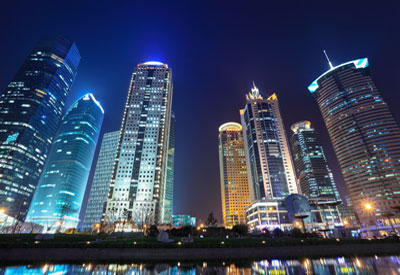Perched in the heart of the Pyrenees range and bordering between France and Spain, Andorra is a small principality under the joint sovereignty of the leader – the king, later the President – of France and the Roman Catholic bishop of the diocese of La Seu d’Urgell in Catalonia, Spain, who are acknowledged as co-princes.
Andorra enjoys a prosperous economy thanks to the estimated 10 million tourists who visit the country every year and the increasing number of overseas investors who benefit from the lack of a direct taxation system in the country. Tourists visiting the Principality are mostly attracted by the excellent conditions for the practice of open-air sports activities, both in summer and winter, and the availability of duty-free goods. The country’s banking sector, which enjoys a partial tax haven status, also accounts for a substantial proportion of the economy. Financial institutions in Andorra are well known for their transparency and security aspects.
Since its sovereignty was established with the 1993 constitution, Andorra has become an active member of the international community, becoming a full member of many international organizations, such as the United Nations (UN), the United Nations Educational, Scientific and Cultural Organization (UNESCO), the International Telecommunications Union (ITU), and the Organization for Security and Cooperation in Europe (OSCE).
In this Country Profile
:: Background of Andorra ::
For 715 years, from 1278 to 1993, Andorrans lived under a unique co-principality, ruled by French and Spanish leaders (from 1607 onward, the French chief of state and the Spanish bishop of Seu d’Urgell). In 1993, this feudal system was modified with the titular heads of state retained, but the government transformed into a parliamentary democracy. For decades Andorra enjoyed its status as a small refuge of fiscal and banking freedom and benefitted from Spanish and French tourists attracted to the country’s duty-free shopping. The situation has changed in recent years as Andorra started to tax foreign investment and other sectors. Tourism accounts for over 80% of Andorra’s gross domestic product.
:: Geography of Andorra ::
Location: Southwestern Europe, between France and Spain
Geographic coordinates: 42 30 N, 1 30 E
Area:
total: 468 sq km
land: 468 sq km
water: 0 sq km
Area – comparative: 2.5 times the size of Washington, DC
Land boundaries: 120.3 km
Coastline: 0 km (landlocked)
Maritime claims: none (landlocked)
Climate: temperate; snowy, cold winters and warm, dry summers
Terrain: rugged mountains dissected by narrow valleys
Elevation extremes:
lowest point: Riu Runer 840 m
highest point: Pic de Coma Pedrosa 2,496 m
Natural resources: hydropower, mineral water, timber, oil, iron ore, lead
Land use:
arable land: 2.13%
permanent crops: 0%
other: 97.87% (2005)
Irrigated land: NA
Natural hazards: avalanches
Environment – current issues: deforestation; overgrazing of mountain meadows contributes to soil erosion; air pollution; wastewater treatment and solid waste disposal
Environment – international agreements: party to: Biodiversity, Desertification, Hazardous Wastes, Ozone Layer Protection; signed, but not ratified: none of the selected agreements
Geography – note: landlocked; straddles a number of important crossroads in the Pyrenees
:: People of Andorra ::
Population: 84,525 (July 2010 est.)
Age structure:
0-14 years: 15.5% (male 6,710/female 6,305)
15-64 years: 72.2% (male 31,604/female 28,925)
65 years and over: 12.3% (male 5,113/female 5,231) (2010 est.)
Median age:
total: 39.9 years
male: 40.2 years
female: 39.6 years (2010 est.)
Population growth rate: 0.382% (2010 est.)
Birth rate: 10.03 births/1,000 population (2010 est.)
Death rate: 6.21 deaths/1,000 population (July 2010 est.)
Net migration rate: 0 migrant(s)/1,000 population (2010 est.)
Urbanization:
urban population: 89% of total population (2008)
rate of urbanization: -0.2% annual rate of change (2005-10 est.)
Sex ratio:
at birth: 1.066 male(s)/female
under 15 years: 1.06 male(s)/female
15-64 years: 1.09 male(s)/female
65 years and over: 0.99 male(s)/female
total population: 1.07 male(s)/female (2010 est.)
Infant mortality rate:
total: 3.84 deaths/1,000 live births
male: 3.79 deaths/1,000 live births
female: 3.89 deaths/1,000 live births (2010 est.)
Life expectancy at birth:
total population: 82.36 years
male: 80.3 years
female: 84.55 years (2010 est.)
Total fertility rate: 1.34 children born/woman (2010 est.)
HIV/AIDS – adult prevalence rate: NA
HIV/AIDS – people living with HIV/AIDS: NA
HIV/AIDS – deaths: NA
Nationality: noun: Andorran(s) adjective: Andorran
Ethnic groups: Spanish 43%, Andorran 33%, Portuguese 11%, French 7%, other 6% (1998)
Religions: Roman Catholic (predominant)
Languages: Catalan (official), French, Castilian, Portuguese
Literacy:
definition: NA
total population: 100%
male: 100%
female: 100%
School life expectancy (primary to tertiary education):
total: 12 years
male: 11 years
female: 12 years (2008)
Education expenditures: 3.2% of GDP (2008)

Sorry, the comment form is closed at this time.